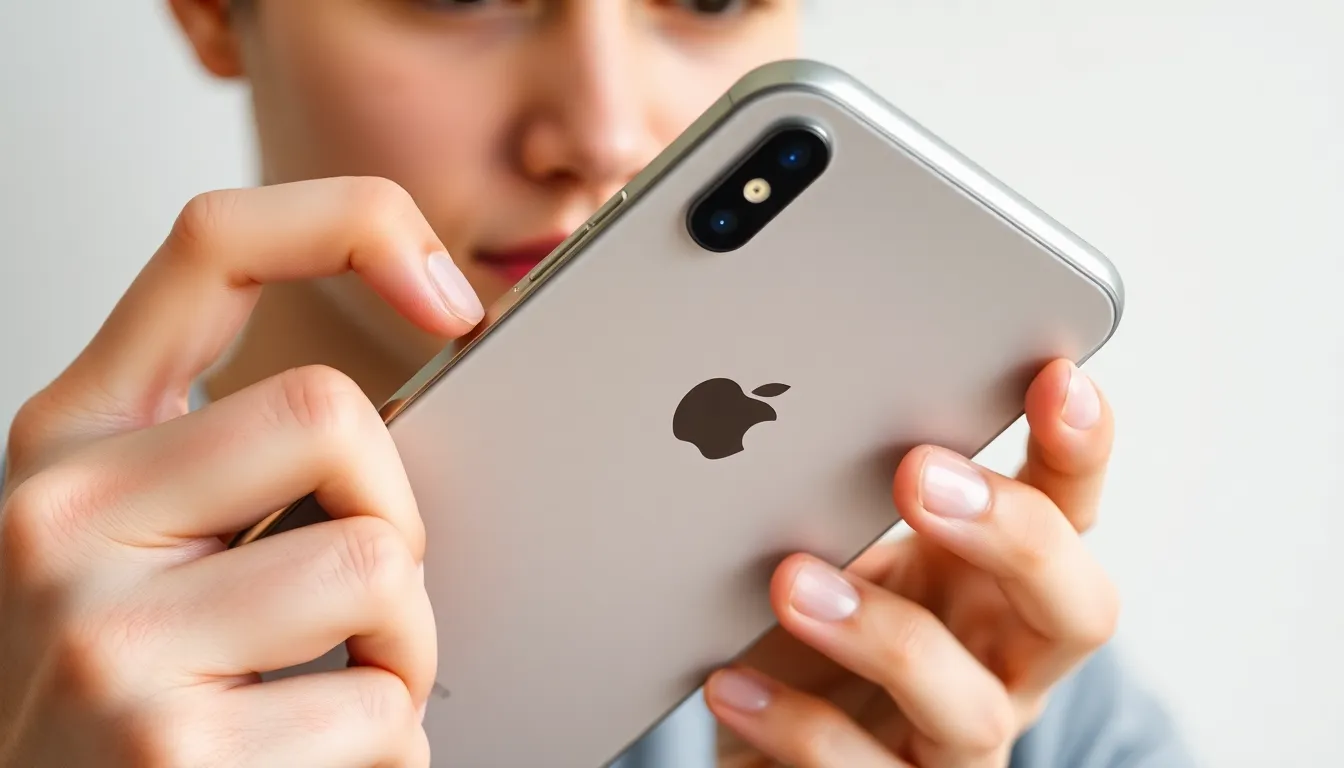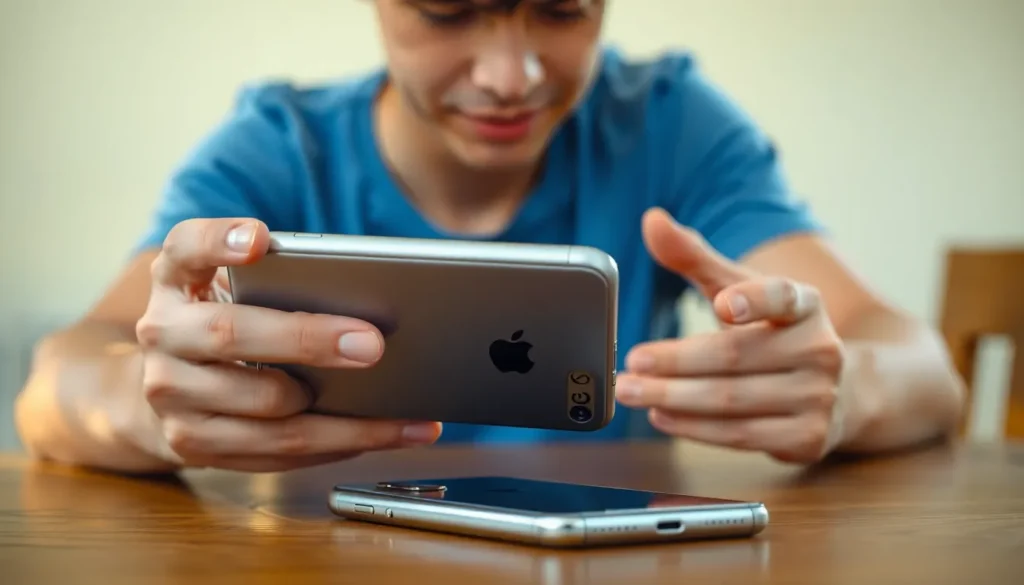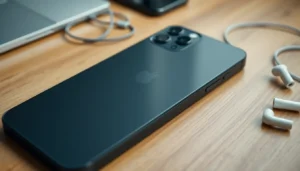Table of Contents
ToggleEver stared at your iPhone and thought, “What model am I even using?” You’re not alone. With so many versions and updates, it can feel like trying to decipher a secret code. But fear not! Finding out your iPhone model is easier than figuring out how to use that one feature you never touch.
Importance Of Knowing Your iPhone Model
Knowing your iPhone model provides several benefits. First, it assists in troubleshooting issues effectively. Each model has unique features, functions, and specifications that may impact problem-solving methods.
Second, proper identification helps when upgrading software. Certain iOS updates support only specific models. By recognizing the model, users ensure compatibility and avoid potential disruptions.
Understanding the model also simplifies accessory selection. Many accessories, like cases or screen protectors, are not universal. Knowing the model guarantees a proper fit and optimal performance.
Third, it enhances user experience with apps and features. Some applications and services are available exclusively for particular models. Identifying the device enables access to all features and capabilities.
Fourth, the resale value of an iPhone largely depends on its model. Potential buyers often seek specific characteristics associated with certain models. Accurate identification can lead to better pricing and a smoother selling process.
Awareness of the model aids in warranty inquiries. Each iPhone model has distinct warranty terms. Knowing the model enables users to understand their coverage and rights.
Finally, familiarity with the iPhone model fosters informed discussions. Whether engaging with customer support or participating in online forums, precise information enriches interactions. Sharing model specifics leads to more accurate advice and solutions.
Overall, knowing the iPhone model facilitates various tasks, from technical support to managing accessories. This knowledge empowers users to navigate their iPhone experience more efficiently.
Methods To Identify Your iPhone Model

Identifying an iPhone model can be accomplished through a few straightforward methods. Here are two effective approaches.
Checking The Settings App
Navigating to the Settings app is the easiest method. Users can tap on “General,” then select “About.” The model name appears at the top of the screen, easily identifiable. Additionally, the model number follows, providing even more detail. Knowing the model helps with software compatibility and accessories. This method works well if the device is functional.
Using The Physical Device
Examining the physical device offers another reliable option. Users can check the back of the iPhone for the model number, usually printed in small text. A quick search online using this number can reveal the specific model name. Alternatively, identifying the physical characteristics, such as camera placement or screen size, also assists in determining the model. This hands-on approach is particularly beneficial for older devices with outdated software.
Resources For Your iPhone Model
Finding your iPhone model is easier with the right resources. Several options provide detailed information and guidance.
Apple Support Website
Apple’s official support website offers comprehensive tools and articles to help identify iPhone models. Users can navigate to the “iPhone” section, which contains specifications and model comparisons. Each device’s features are outlined, making it straightforward to match them with existing devices. Additionally, a dedicated support page lists model numbers paired with images for visual aid. This resource ensures users receive accurate, authoritative information directly from Apple.
Online Model Identification Tools
Various online tools simplify the process of identifying an iPhone model. Websites like Everyi.com and iPhoneIMEI.net allow users to input their model number or serial number for instant results. These tools often include detailed specifications and comparisons not readily available elsewhere. Accurate results come from user-friendly interfaces that require minimal input, providing a hassle-free experience. Many users find these resources convenient when quick identification is necessary, saving time and effort.
Common iPhone Models
Identifying common iPhone models helps users distinguish between various versions. The iPhone 14 series includes the iPhone 14, iPhone 14 Plus, iPhone 14 Pro, and iPhone 14 Pro Max. Each model features distinct specifications and characteristics.
The iPhone 13 series follows closely with its own set of options: iPhone 13, iPhone 13 mini, iPhone 13 Pro, and iPhone 13 Pro Max. These models introduced improvements in battery life and camera performance.
Significant advancements occurred with the iPhone 12 series, comprising iPhone 12, iPhone 12 mini, iPhone 12 Pro, and iPhone 12 Pro Max. Users noted changes in design, including the return to flat edges and enhanced durability.
The iPhone SE (2nd generation) remains popular for those seeking a compact option with robust capabilities. Its lower cost appeals to budget-conscious users.
Notable models from earlier generations include the iPhone 11, iPhone XS, and iPhone XR. Each contributed to evolving technology, showcasing features like advanced camera systems and superior processors.
A quick reference guide makes it easier to identify key characteristics. Users can examine screen sizes, camera configurations, and design elements. Familiarity with these details assists in model identification.
For finding precise model specifications, exploring the Apple Support website offers valuable resources. Users can access comprehensive details on each model, enhancing understanding of features and differences.
By recognizing common models, individuals navigate their iPhone experience more effectively. Awareness of these options aids in troubleshooting, accessory selection, and general device knowledge.
Identifying the specific model of an iPhone is essential for maximizing its potential. This knowledge not only aids in troubleshooting and software updates but also enhances the overall user experience. By using the methods outlined in the article, users can easily determine their iPhone model and access the right resources for support.
With the right information, selecting compatible accessories and ensuring optimal performance becomes much simpler. Understanding the model also plays a crucial role in discussions with customer support and when considering resale options. Armed with this knowledge, iPhone users can navigate their devices with confidence and ease.







